News
Portuguese Houses Tour Held on Saturday

In September 1859, Captain W. F. Raynolds, (in the U.S. Army Corps of Topographical Engineers) visited the site of an old trading post, at the junction of the north and south forks of the Powder River. He describes it in his notes. “After a ride of about fifteen miles we came to the ruins of some old trading post, known as the Portuguese Houses, from the fact that many years ago they were erected by a Portuguese trader named Antonia Matoe. They are now badly dilapidated, and only one side of the pickets remains standing. These, however, are of hewn logs. and from their character it is evident that the structures were originally very strongly built.” …. The Kaycee Independent, February 22, 1917
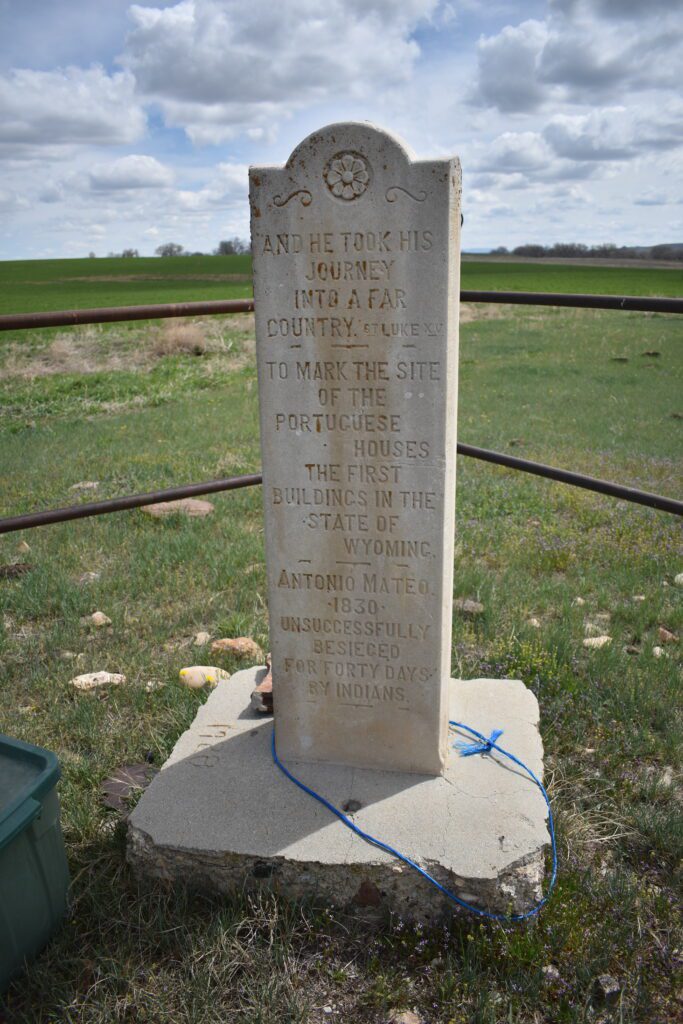
On April 27, nearly 165 years since Reynolds stood at the ruins of the old trading post, a large crowd gathered at the same site, which is marked by a stone monument that was placed there in 1928. While there is nothing left of the post that can be seen above ground, sunken areas reveal where the walls once stood, and archaeological evidence is being found at the site.
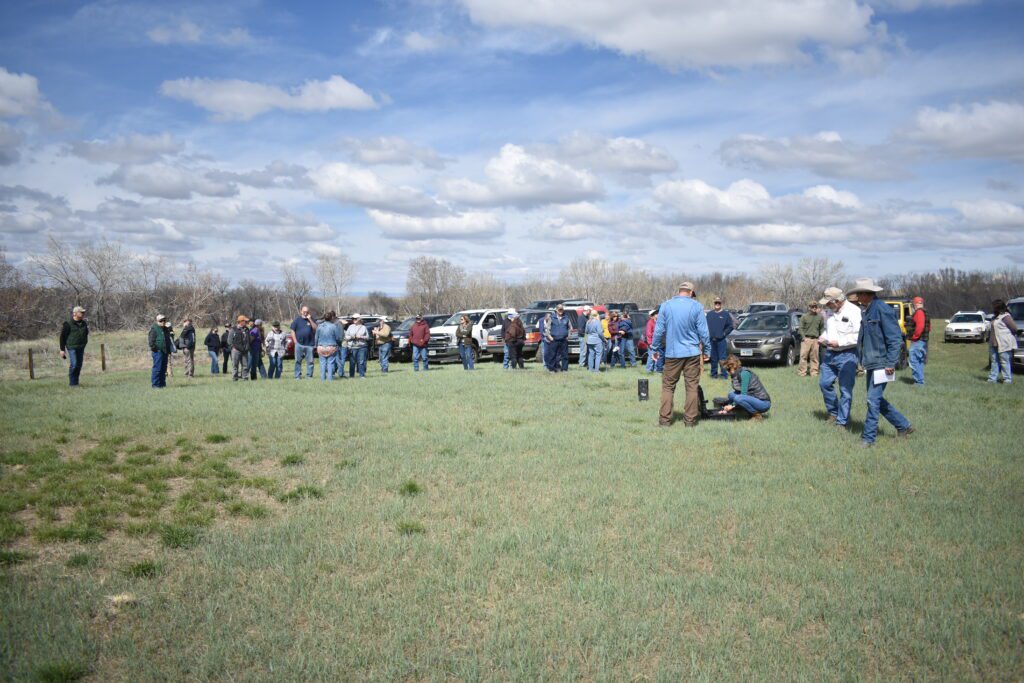
The tour was hosted by the Fort Phil Kearny/Bozeman Trail Association along with the Hoofprints of the Past Museum in Kaycee.
Dave McKee, president of the FPK/BTA, introduced the speaker. He also
He also thanked Laurel Foster, director of the Hoofprints of the Past Museum in Kaycee, for helping to set up the tour.
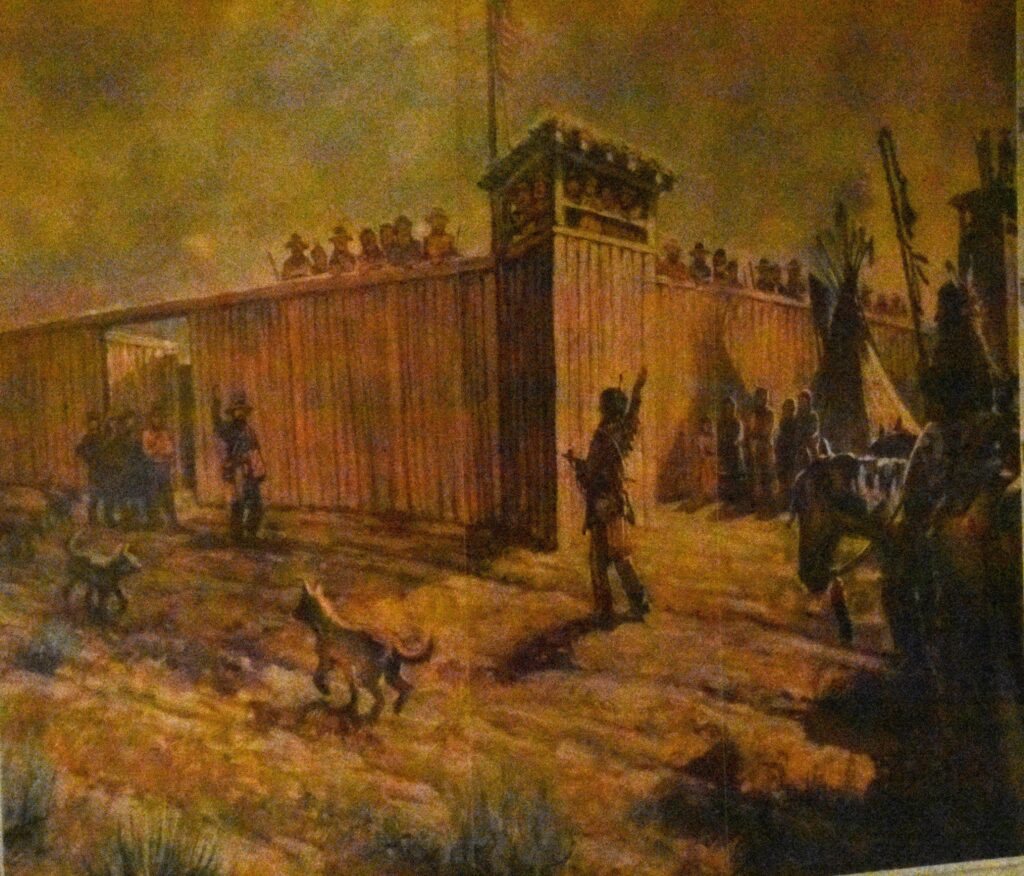
Cody Newton, archaeologist, who has been working at the site, gave the presentation. Newton said the Brock Hanson, Kaycee historian, was the one who set up the project at the site of the post.
He added this about the old trading post,
Newton talked about the American Fur Company, which was already operating in the area, and Montero was working for them, but Benjamin Bonneville, United States Army and fur trapper, offered higher wages, so Montero went to work for him. He was sent out to trade with the Native American’s, namely the Crow, for bison robes.
Newton said that after Montero and his men abandoned the post, it continued to be used for shelter and a place to stop along the trail. Jim Bridger, in the above-mentioned Kaycee Independent newspaper article, mentioned traveling past Montero’s post and talked about a time when the Lakota laid siege to the trading post for 40 days.
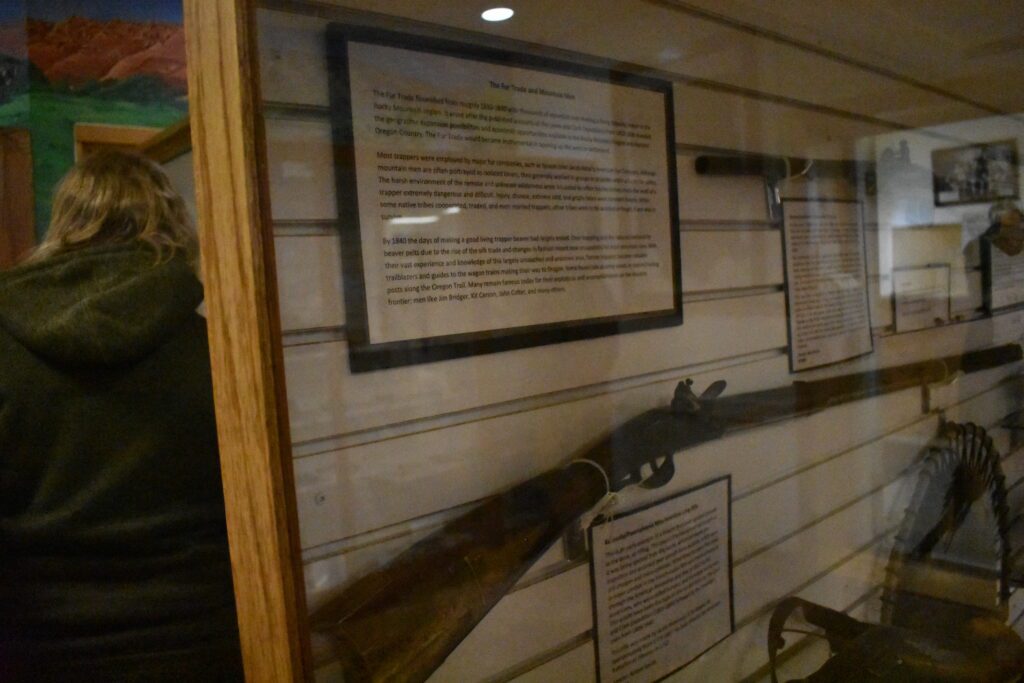
The Portuguese Houses is a unique site, and artifacts that have been found from the area have been donated to the Hoofprints of the Past Museum in Kaycee. Artifacts include everything from an old sword, lead balls, arrowheads, beads, boat rivets, clay pipes and other items.
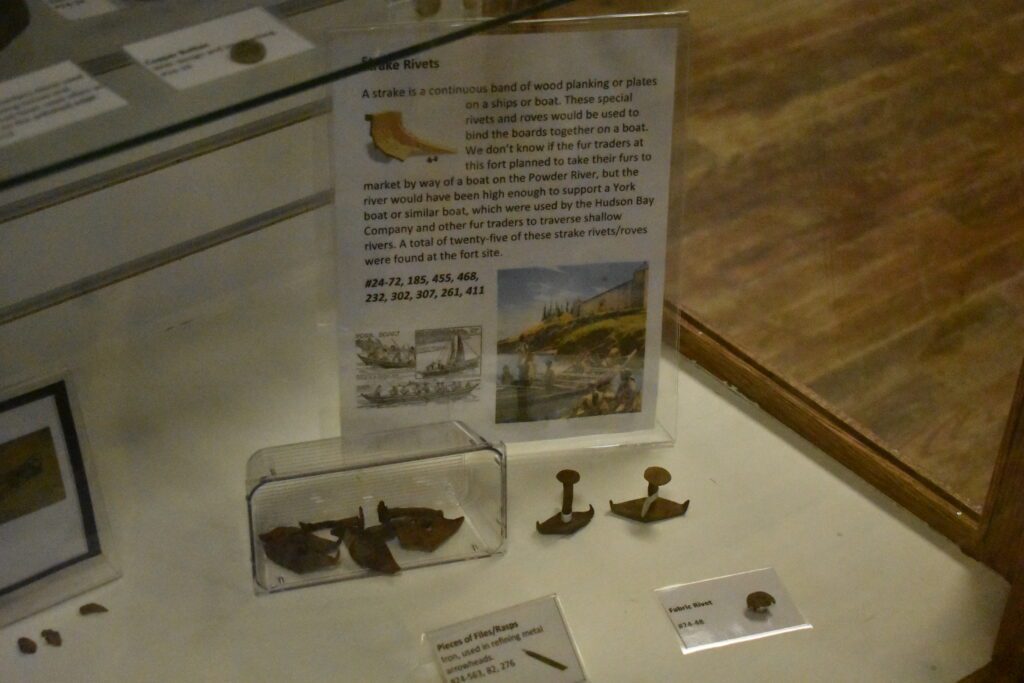
The day for the tour was warm and sunny, and after the talk at the site of the old trading post, the crowd toured the Hoofprints of the Past Museum, where the many of the artifacts are now on display.

